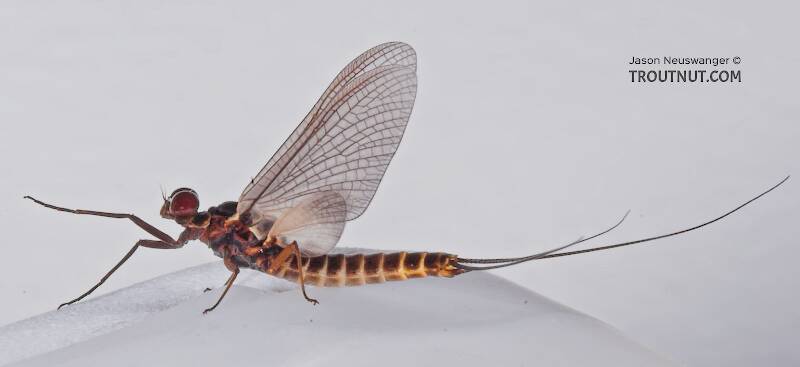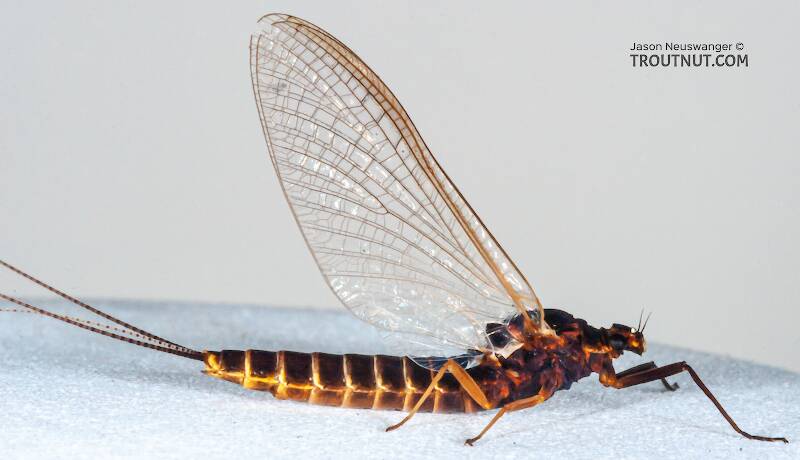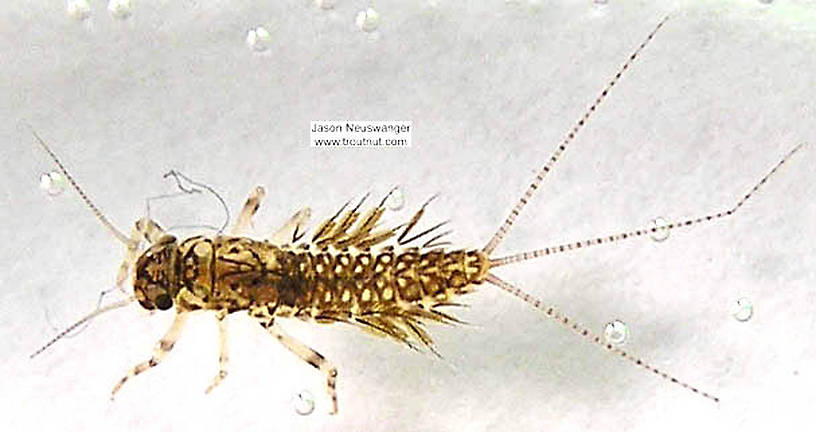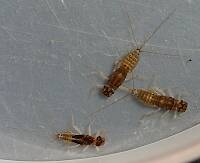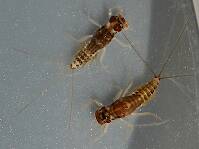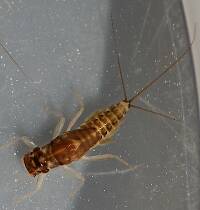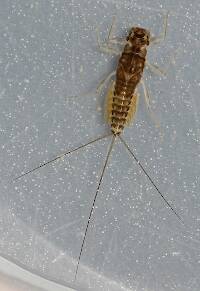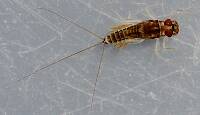
Blue-winged Olives
Baetis
Tiny Baetis mayflies are perhaps the most commonly encountered and imitated by anglers on all American trout streams due to their great abundance, widespread distribution, and trout-friendly emergence habits.
Featured on the forum

This one seems to lead to Couplet 35 of the Key to Genera of Perlodidae Nymphs and the genus Isoperla, but I'm skeptical that's correct based on the general look. I need to get it under the microscope to review several choices in the key, and it'll probably end up a different Perlodidae.

Troutnut is a project started in 2003 by salmonid ecologist Jason "Troutnut" Neuswanger to help anglers and
fly tyers unabashedly embrace the entomological side of the sport. Learn more about Troutnut or
support the project for an enhanced experience here.
This topic is about the Mayfly Species Leptophlebia cupida
Most anglers encounter these large mayflies every Spring in the East and Midwest. They are omnipresent in small portions, providing filler action in the days or hours between the prolific hatches of the early season Ephemerella flies.See the main Leptophlebia page for details about their nymphs, hatching, and egg-laying behavior. This is by far the most important species of that genus.
Example specimens
GONZO on Feb 23, 2007February 23rd, 2007, 5:39 am EST
Thanks, Roger. I'm hoping for clarification as well. By the way, you might want to amend your last post to refer to Ameletus rather than Isonychia and March rather than May. Or are you just trying to further confuse me? :)
PS-The comment about ludens/lineatus simply reflects the fact that I am never entirely sure that I have the latest taxonomic info available, and that there seems to have been some debate about whether they truly deserve the species distinction. I'll certainly trust Mayfly Central on such matters. (As I do you.)
PS-The comment about ludens/lineatus simply reflects the fact that I am never entirely sure that I have the latest taxonomic info available, and that there seems to have been some debate about whether they truly deserve the species distinction. I'll certainly trust Mayfly Central on such matters. (As I do you.)
Taxon on Feb 23, 2007February 23rd, 2007, 6:08 am EST
Thanks, Gonzo. My introduction of more confusion was not intentional. Have corrected with bolding in the post.
Taxon on Feb 23, 2007February 23rd, 2007, 7:07 am EST
PS-The comment about ludens/lineatus simply reflects the fact that I am never entirely sure that I have the latest taxonomic info available, and that there seems to have been some debate about whether they truly deserve the species distinction. I'll certainly trust Mayfly Central on such matters. (As I do you.)
Gonzo-
Wasn't aware of any debate. I have emailed Dr. Jacek Zloty, Department of Biological Science, University of Calgary, and requested a copy of his publication: Zloty J. 1996. A revision of the Nearctic Ameletus mayflies based on adult males, with descriptions of seven new species (Ephemeroptera: Ameletidae). Canadian Entomologist 128:293-346
DarkDun
Posts: 16
Posts: 16
DarkDun on Mar 4, 2007March 4th, 2007, 3:48 am EST
The dun I have descibed for early Spring is definitely a 3 Tailed species of 12MM (Black Quill) and the one I have seen in Autumn or late summer is probably the Isonychia (As TAXON defines as Drunella Walkeri)
I hope this will clarify my notes.
I have pretty much resolved that the Dun which I have been observing is a Black Quill (L.Cupida)in the Spring, from late Feb and early March in our SW area of NC. The middle tail does seem to be a bit shorter by maybe 1/8".
I will follow up on the Isonychia as the season progresses or determine that it is still another species???
Dark Dun
Taxon on Mar 4, 2007March 4th, 2007, 5:10 am EST
DarkDun-
The species of interest to flyfishers, which are found in the North Carolina, would come reasonably close to your body description of deep brownish and wing description of smoky dark gray, and have a dun length range encompassing the length you describe, would be the following:
Leptophlebia cupida (Black Quill) - emerges mid-Apr to late-Aug
Drunella walkeri (Slate Drake) - emerges mid-Jul to mid-Sep
So, I would guess you are encountering Black Quills in March, and (somewhat-delayed-emerging) Slate Drakes in October.
Oops. Should have said:
So, I would guess you are encountering Black Quills in March, and (somewhat-delayed-emerging) Drunella walkeri (Large Blue-Winged Olives) in October.
Didn't mean to suggest Isonychia by use of the common name, Slate Drake.
Quick Reply
Related Discussions
Topic
Replies
Last Reply
3
Mar 9, 2014
by Entoman
by Entoman
4
Dec 22, 2009
by Oldredbarn
by Oldredbarn
18
Sep 15, 2014
by Oldredbarn
by Oldredbarn


